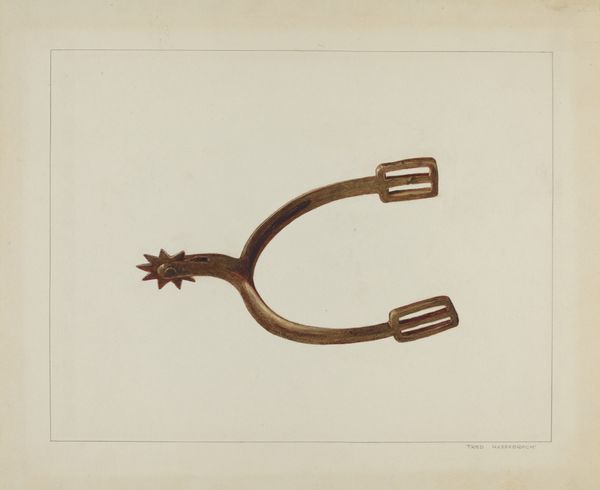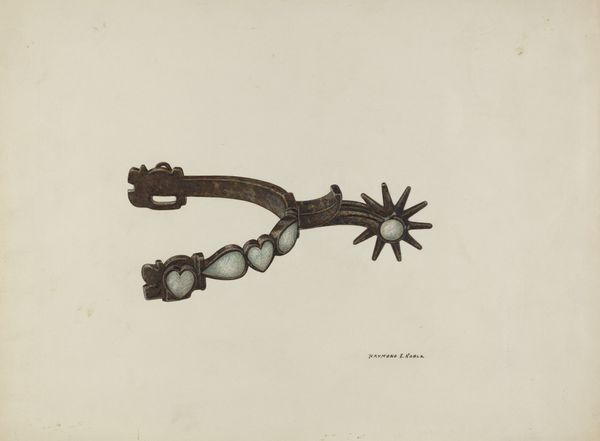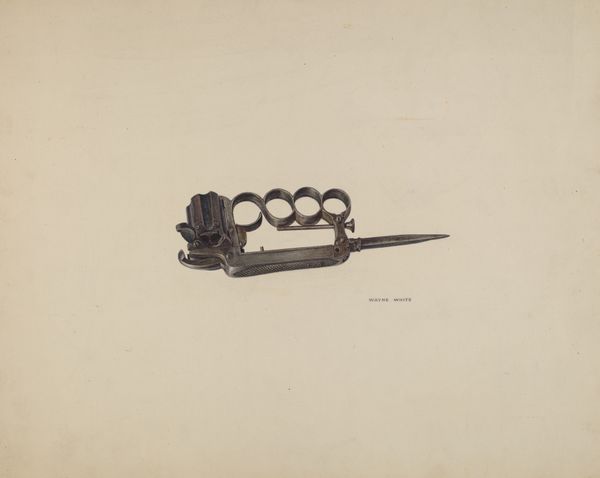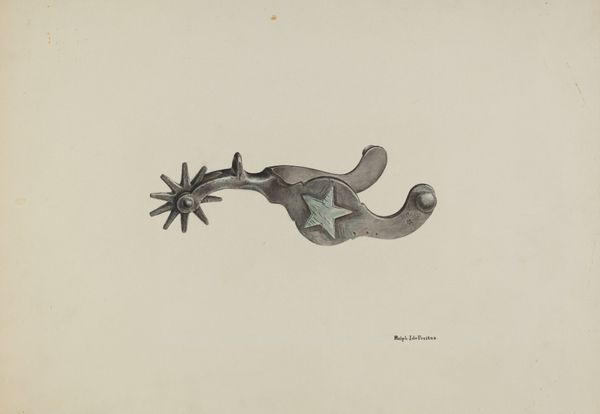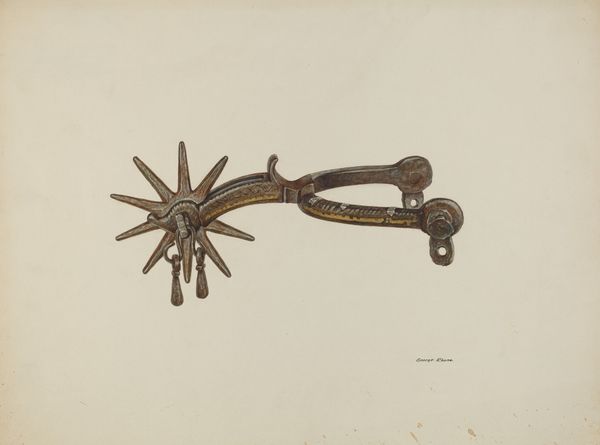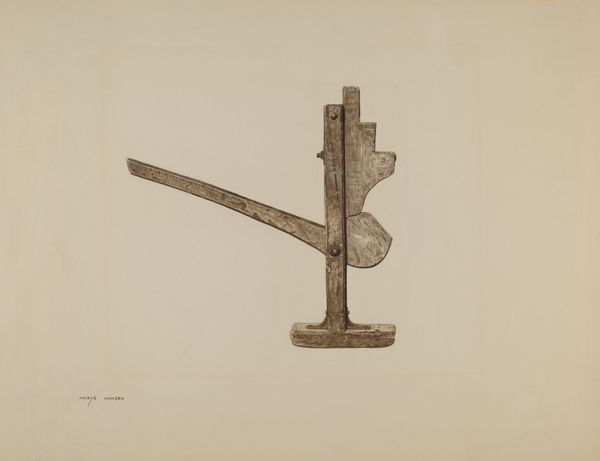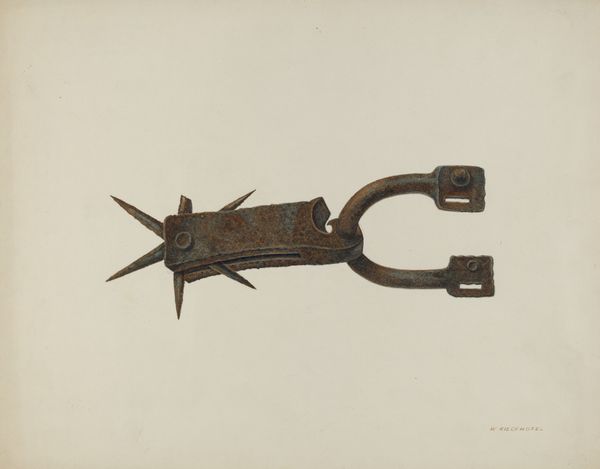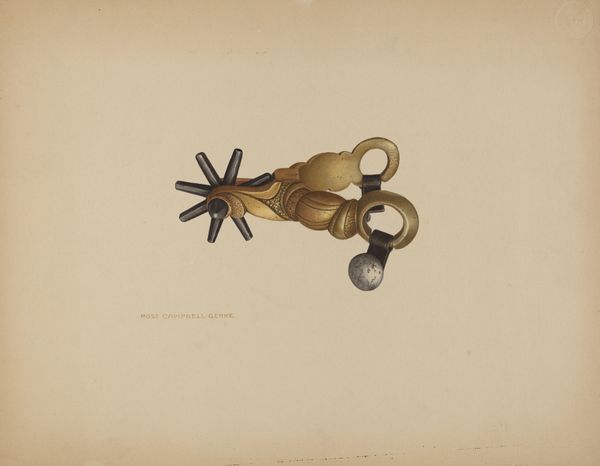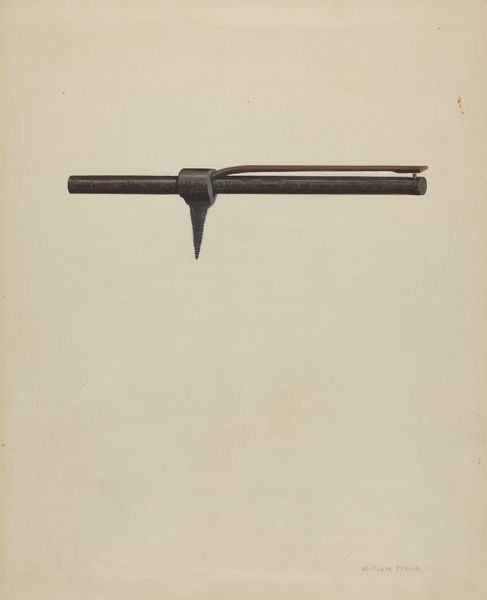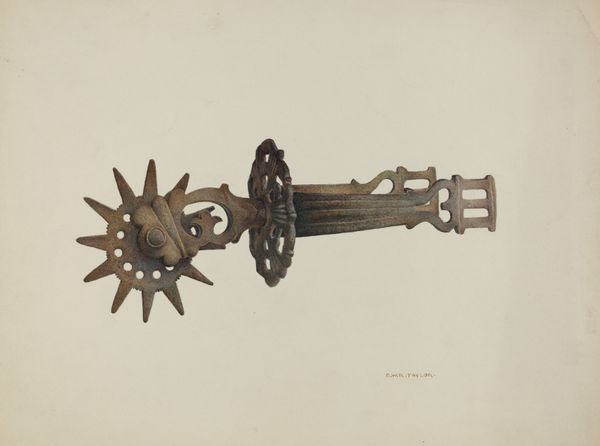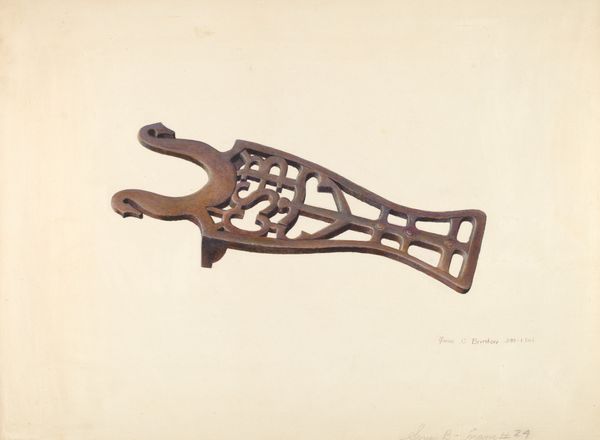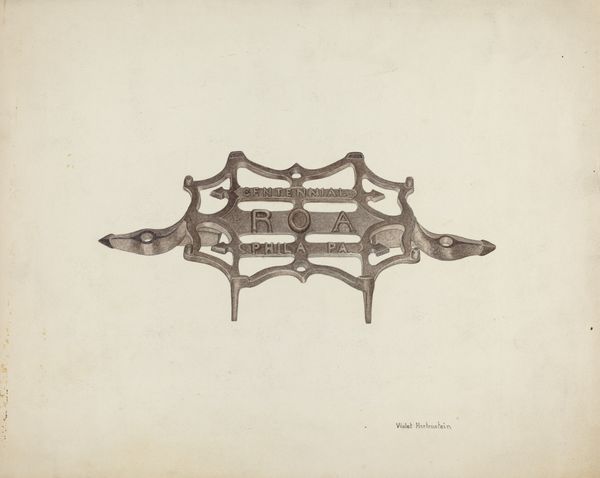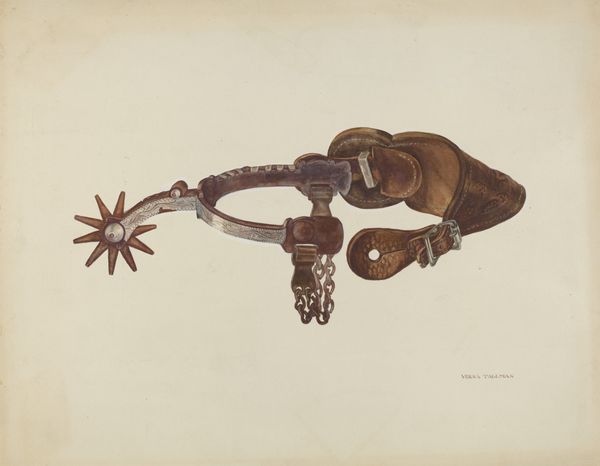
drawing
#
drawing
#
academic-art
#
realism
Dimensions: overall: 28.2 x 35.9 cm (11 1/8 x 14 1/8 in.)
Copyright: National Gallery of Art: CC0 1.0
Curator: This drawing, simply titled "Spur," was created by Robert W.R. Taylor around 1940. It offers a realistic depiction of a single, antique metal spur. Editor: My first thought is its stillness—a kind of expectant waiting. The texture feels incredibly tactile. What can you tell me about the materials at play here? Curator: We believe this piece is a straightforward drawing, likely with graphite and perhaps some chalk. It's remarkable how Taylor uses shading to give the metal a palpable weight. I read the spur as a symbol of domination. Its connection to labor exploitation within broader agricultural industries, along with a legacy steeped in cultural ideas of rugged individualism, evokes strong emotions, doesn’t it? Editor: Yes, definitely the materiality speaks to exploitation. I'm drawn to how a drawing renders what is typically a cold, hard metal object almost domestic—displayed against that neutral, almost bleached ground. You sense that it could exist as much on the page as on the rancher’s boot. What’s its relevance to Realism? Curator: Realism is concerned with portraying subject matter truthfully, and I see how Taylor accomplishes that here. Consider the detail in rendering rust marks—details are unglamorized, a common visual language and technique in academic circles that is taken to task during modernity with a deliberate reorientation against this perspective in artmaking. But in a larger sense I ask, who is the artwork in service of—whose truth does the artist prioritize here, considering these class and gender biases? Editor: Interesting. But there is a compelling relationship at play that challenges expectations of craft as inferior—considering Taylor’s ability with fairly simple tools. How does this contrast of materials shape one's reading of cowboyism’s hypermasculine archetype? Curator: Precisely—through careful study, Realism makes an honest gesture to create social commentary by calling out issues that might have existed throughout the history of art up to Taylor's artistic practice and in present-day readings too. That very archetype gets complicated because there are class struggles embedded in these practices of domination! Editor: Yes! By elevating the labor it depends on, the drawing becomes, quite paradoxically, revolutionary—don’t you think? I find my perception shifting, just discussing it. Curator: And by examining those processes, it can really shape our understandings and perceptions of labor practices from the cowboy’s to the farmworker’s to the artisan’s handiwork today.
Comments
No comments
Be the first to comment and join the conversation on the ultimate creative platform.
